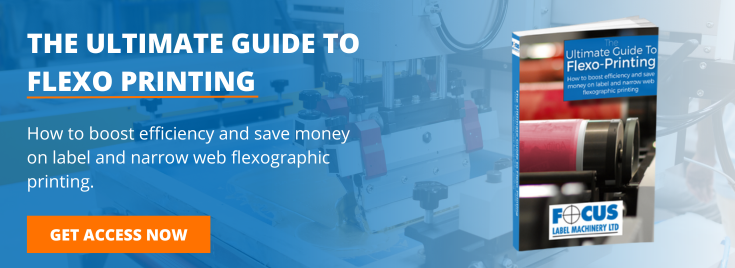
Flexographic printing plates are a type of reusable, roller-plate technology that are used to print high-quality multicolour labels & packaging, and many other types of non-bound, one-sheet card and paper items.
While the technology dates from the nineteenth century, modern improvements have made flexography sophisticated, durable, and adaptable.
But how environmentally friendly is flexography? And, long-term, is it a sustainable printing technology?
Here are our pros and cons.
The green points of flexography
The great advantage of flexographic printing plates is that they are wipeable and reusable across millions of impressions.
When the Print Run is finished, the ink is washed off and Printing Plate Stored away to be re-used another day. This makes flexography sustainable, adaptable, and cost-effective where repeat orders are applicable in your business.
The production of a Flexo printing plate can processed using water, solvent or digitally using the latest computer to plate advances. Where suitable, water and digital processed plates can reduce harmful impact of solvents without any downside to print quality on press.
The not so green points
As well as being slightly more expensive to set up than other printing processes, flexography also requires more rollers and ink to be used to create full-colour finished products (a minimum of four).
Historically, companies did struggle with removing and storing used toxic inks from flexographic rollers and cleaning the rollers thoroughly to prevent 'ghost' impressions and residual dots. However, modern Plate materials are easier to clean and have good wear resistance properties.
Automated Plate cleaning systems are also common-place in modern print houses, but consideration needs to be given to disposing of cleaning and waste liquid.
If you're just creating labels for reference or shipping purposes, you (and the environment) might be better off with small-scale, adaptable techniques (such as thermal printing).
Flexographic improvements haven't fully solved the problem of dealing with the disposal of toxic inks and solvents, either. You'll need measures in place to prevent blackwater leakage during the 'wash' phase of flexography.
Flexographic printing machines from Focus Label
Does flexographic printing seem like it could be the right option for your business? Focus Label Machinery specialise in designing, building, installing, and maintaining fully-digital, cost-effective, eco-friendly flexographic printing presses.
Call or email us today to learn more and get a free quote.
Image source: Pixabay






